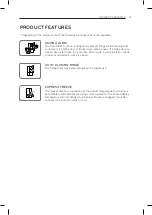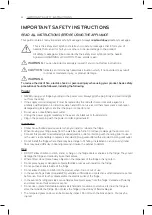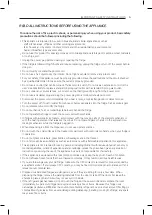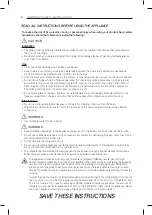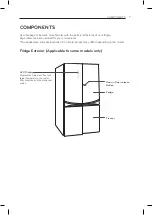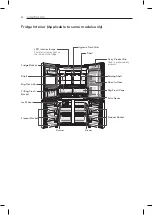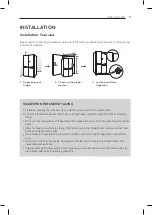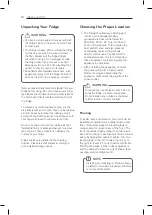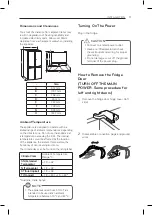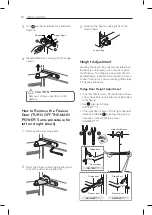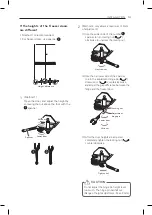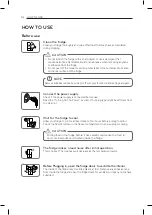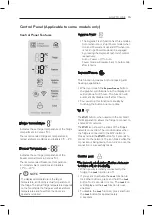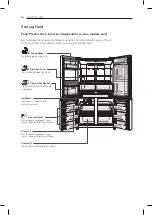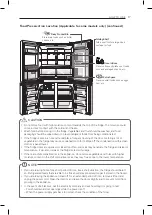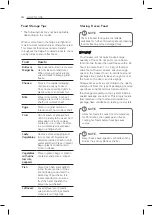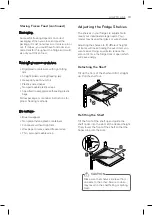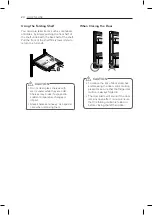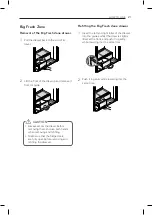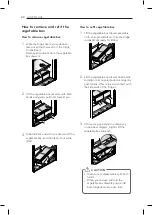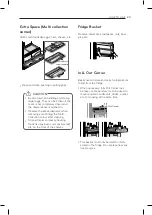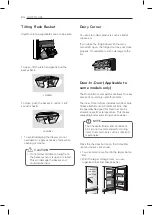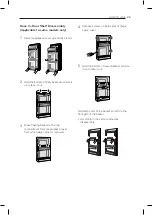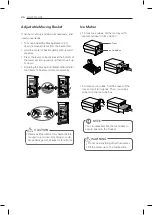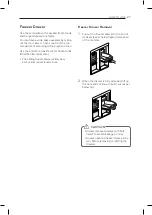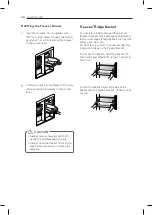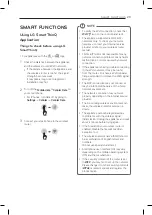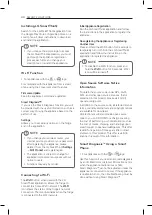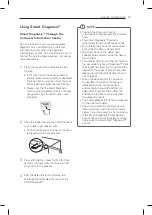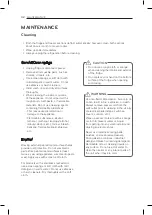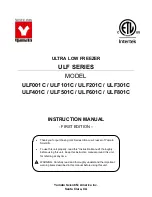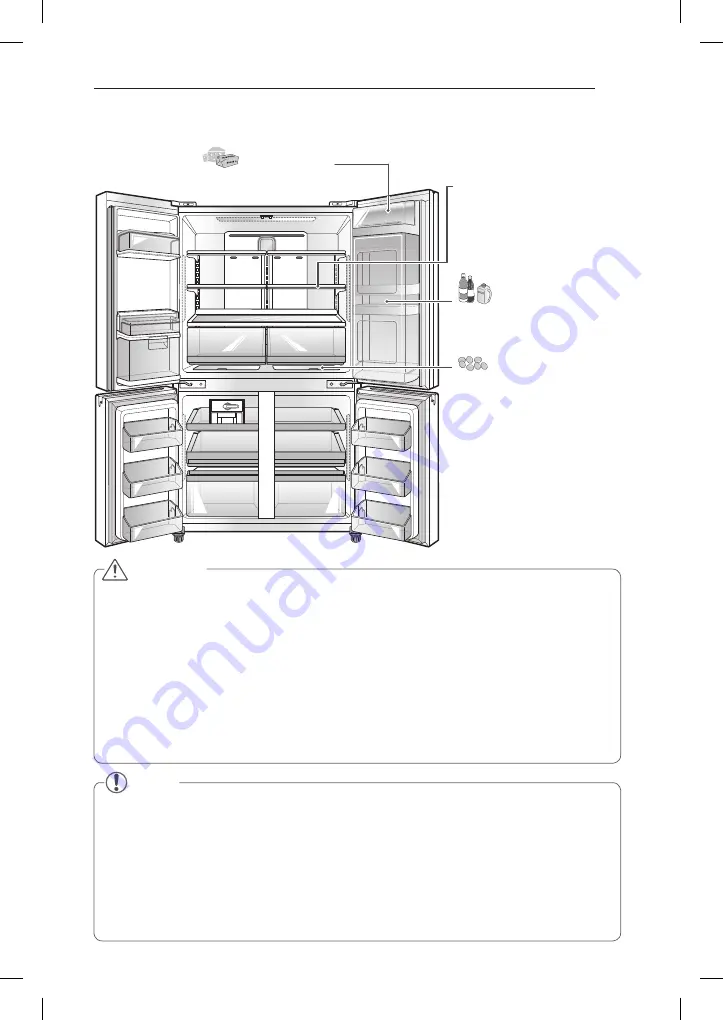
17
HOW TO USE
Food Preservation Location (Applicable to some models only) (continued)
CAUTiON
•
Do not store food with high moisture content towards the top of the fridge. The moisture could
come in direct contact with the cold air and freeze.
•
Wash food before storing it in the fridge. Vegetables and fruit should be washed, and food
packaging should be wiped down to prevent adjacent foods from being contaminated.
•
If the fridge is kept in a hot and humid place, frequent opening of the door or storing a lot of
vegetables in the fridge may cause condensation to form. Wipe off the condensation with a clean
cloth or a paper towel.
•
If the fridge doors are opened or closed too often, warm air may penetrate the fridge and raise its
temperature. It can also increase the fridge’s electricity usage.
•
If there are chill compartments in the appliance, do not store vegetables and fruits with higher
moisture content in the chill compartments as they may freeze due to the lower temperature.
NOTE
•
If you are leaving home for a short period of time, like a short vacation, the fridge should be left
on. Refrigerated foods that are able to be frozen will stay preserved longer if stored in the freezer.
•
If you are leaving the appliance turned off for an extended period of time, remove all food and
unplug the power cord. Clean the interior, and leave the doors slightly ajar to prevent mold from
growing in the appliance.
•
In the event of a blackout, call the electricity company and ask how long it is going to last.
− You should avoid door openings while the power is off.
− When the power supply gets back to normal, check the condition of the food.
Dairy Product Bin
Store diary foods such as butter,
cheese, etc.
Extra Space
Preserve small foods such as eggs,
ham, etc.
Door-In-Door
Preserve frequently-taken out foods
such as beverages, snacks, etc.
Folding Shelf
Fold a shelf to store large-sized
container or food.

